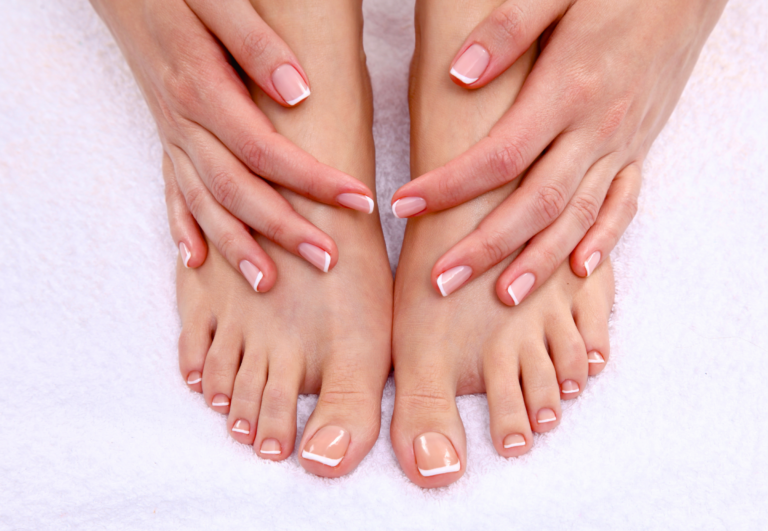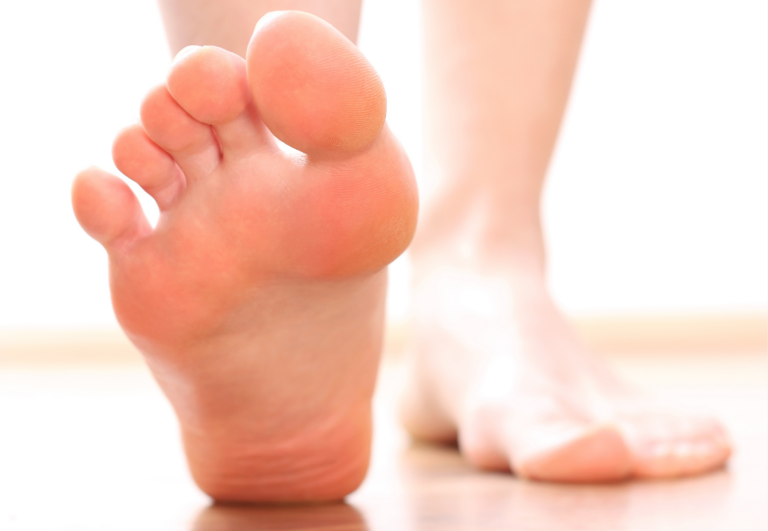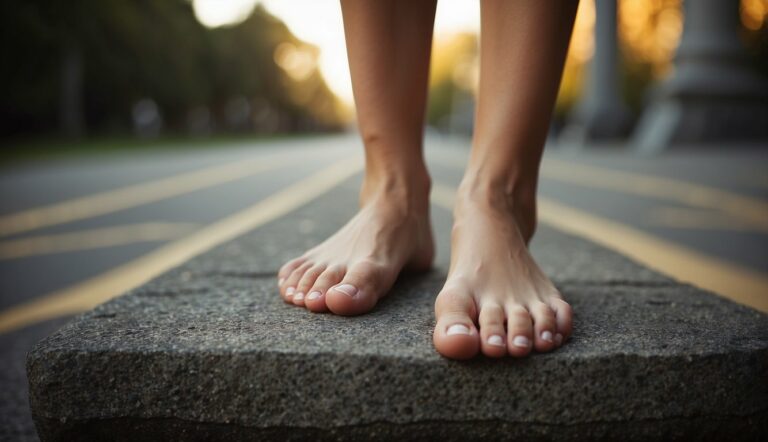How Do Toe Spacers Differ from Orthotic Inserts: Their Unique Functions
Toe spacers and orthotic inserts are two common solutions for foot-related discomfort and deformities, yet they serve different purposes and function distinctly. As someone well-acquainted with the use of toe spacers, I understand they are designed to separate the toes and align them in their natural position. This can alleviate pain from bunions, overlapping toes, and other foot deformities. Made from materials such as silicone or gel, toe spacers fit snugly between the toes, providing immediate relief by reducing friction and promoting better toe alignment.
Orthotic inserts, on the other hand, are crafted to correct foot posture and redistribute pressure across the foot. Instead of focusing on toe separation, orthotics typically support the arch and heel, addressing issues related to flat feet, plantar fasciitis, or heel pain. They are often recommended by healthcare professionals for patients who need specific foot posture correction, which can ultimately improve their overall balance and gait.
Knowing the particular function of toe spacers and orthotic inserts is crucial for anyone looking to address foot discomfort or medical conditions. Toe spacers work primarily on toe alignment while providing some relief from pressure, while orthotics are more about structural support and correcting foot posture over time. Identifying your specific needs is essential when choosing between these two types of foot care products.
Basics of Toe Spacers and Orthotic Inserts
In everyday foot care, understanding the role of toe spacers and orthotic inserts is crucial for maintaining foot health. These products can provide support, alleviate discomfort, and help with foot alignment, but they serve different purposes and are designed differently.
Definition and Purpose
Toe spacers are designed to separate the toes and maintain proper alignment, preventing them from overlapping or squeezing together. I find they can be particularly beneficial for people with bunions, hammertoes, or just general toe discomfort. Their primary function is to improve foot posture and strengthen the intrinsic foot muscles over time.
Orthotic inserts, on the other hand, are customized or generic insoles that are placed inside the shoe to correct foot biomechanics. They support the arch, distribute pressure more evenly across the foot, and can alleviate pain caused by various foot conditions or poor alignment.
Types and Materials
Toe spacers are often made from materials such as:
- Silicone: soft, flexible, and comfortable for daily wear
- Gel: provides cushioning and can conform to the toes
- Foam: lightweight option but may not offer the same level of support
- Rubber: durable and offers a firmer support than other materials
Orthotics also come in different materials, each with its specific function:
- Soft orthotics: typically made from materials like foam or cushioning substances to absorb shock, increase balance, and relieve pressure on sore spots.
- Rigid orthotics: made from materials such as plastic or carbon fiber and designed to control motion in two major foot joints below the ankle.
- Semi-rigid orthotics: combine soft and rigid materials, often beneficial for athletes as they provide balance while being forgiving during athletic activity.
Both toe spacers and orthotics are part of comprehensive foot care, but they have distinct roles: toe spacers work on toe alignment, while orthotic inserts manage the biomechanics of the foot as a whole.
Anatomical and Biomechanical Considerations
When exploring the difference between toe spacers and orthotic inserts, we must take into account their specific effects on foot anatomy and biomechanics.
Toe Alignment and Spacing
Toe spacers are designed primarily to separate the toes, improving joint alignment and reducing pressure. My experience with these devices has shown they can enhance toe mobility and foot strength by preventing the toes from crowding. Their consistent use assists in maintaining proper toe alignment, which contributes to overall foot alignment.
- Improves Toe Alignment: Spacers correct the position of each toe.
- Enhances Foot Strength: Separated toes can move independently, strengthening foot muscles.
Arch Support and Foot Health
Unlike toe spacers, orthotic inserts serve to support the arches of the feet, aiding in the distribution of weight and the improvement of posture. Orthotic inserts contribute to the health of foot-related structures such as tendons and ligaments, and are key in managing strain on the ankle. They do not directly affect toe alignment but can indirectly relieve pressure on forefoot joints.
- Provides Arch Support: Inserts aid in maintaining proper arch curvature.
- Promotes Overall Foot Health: Proper arch support can improve biomechanical function and reduce discomfort.
Common Foot Conditions and Treatments
I’ve found that both recognition and appropriate treatment of common foot conditions are essential for pain relief and recovery. I’ll be discussing traditional treatments for conditions like bunions and hammertoes, as well as methods for managing issues like plantar fasciitis and flat feet.
Bunions, Hammertoes, and Corns
Bunions – These are bony protrusions that often develop at the base of the big toe. Treatment typically involves:
- Toe spacers to relieve pressure
- Proper footwear to accommodate the bunion
- Padding to reduce friction
- Surgery in severe cases
Hammertoes – Caused by an imbalance in the muscles and tendons holding the toe straight, leading to a bent toe joint. Treatments include:
- Strengthening exercises
- Protective pads for corns that may develop on top of the toe
- Orthotics or toe spacers for better foot alignment
Corns and Calluses – Thickened skin due to pressure or friction. They’re often managed by:
- Cushioning pads
- Wearing shoes that fit properly
- Trimming away excess skin (by a professional)
Plantar Fasciitis and Flat Feet
Plantar Fasciitis – Characterized by sharp heel pain, commonly treated with:
- Arch supports to distribute pressure
- Stretching exercises to relieve the tension
- Rest and ice to reduce inflammation
Flat Feet – The lack of an arch can lead to pain and discomfort. Supportive treatments include:
- Custom orthotics to provide arch support
- Stability shoes to correct the foot’s alignment
- Regular exercises to strengthen foot muscles
For both conditions, maintaining a healthy weight and regular physical activity can improve symptoms and promote recovery. It’s important to choose treatments that address both the symptoms and underlying causes to effectively manage pain and improve foot health.
Benefits and Effectiveness
Toe spacers differ significantly from orthotic inserts, primarily in their intended purpose and design. As a toe spacer expert, I’ve witnessed their benefits in providing comfort and reducing pain, while orthotics are typically used for providing structural foot support.
Improved Comfort and Reduction of Pain
Comfort is a standout benefit of toe spacers. I find toe spacers offer cushioning between toes, which helps alleviate friction and direct pressure. For individuals experiencing pain from bunions or hammertoes, the separation provided can lead to noticeable pain relief. They’re also beneficial for recovery after a long day on your feet, where toes may have been crowded by shoes.
Bold Points:
- Cushioning: Acts as a buffer between toes.
- Pain Relief: Reduces discomfort from toe misalignment.
Prevention of Foot Deformities and Injuries
In my experience, consistent use of toe spacers can aid in the prevention of foot deformities, such as overlapping toes. By separating the toes, there’s not only a reduction in the risk of corns and calluses but also an encouragement of proper toe alignment. For those recovering from an injury, toe spacers help maintain toe spacing to prevent future issues. Plus, there’s a potential for improved stability and balance, as properly aligned toes are the foundation of our foot’s structure.
Key Benefits:
- Prevents Deformities: Maintains natural toe alignment.
- Aids Injury Recovery: Supports proper toe spacing during healing.
Selection, Use, and Care
Choosing the right toe spacers, using them properly, and caring for them can enhance their effectiveness and durability for my feet. Let’s go through how to select the best fit, incorporate them in foot exercises, and keep them in prime condition.
Choosing the Right Product
When I select toe spacers, I consider the material and design carefully, as these factors directly impact comfort and effectiveness. I look for spacers made from soft, pliable materials like silicone or gel, which should also be hypoallergenic to avoid skin irritation. The design should accommodate my foot structure and specific condition, whether that’s bunions, hammertoes, or just a desire for more comfortable toes when wearing shoes.
Price is another factor, but it should not be the sole determinant because higher-quality materials and design often lead to increased durability. I consult a podiatrist when in doubt, as they can recommend the most suitable toe spacers for my needs.
Proper Usage and Exercises
Wearing toe spacers correctly can make a big difference. I ensure that they fit snuggly between my toes without causing pain or discomfort. It’s also essential to pair them with the right footwear; wide-toe box shoes typically work best to accommodate spacers.
Incorporating toe spacers into my routine involves exercises and stretches that help strengthen my foot muscles. These can include toe curls, spreading my toes and holding the position, and pressing my toes against resistance. I use toe spacers during these exercises to enhance the stretch and strengthen the muscles for better foot alignment.
Maintenance and Durability
To maintain the toe spacers’ durability, I clean them regularly following manufacturer instructions, typically using mild soap and warm water. Proper care prevents the buildup of bacteria and extends the life of the product. Storing them in a cool, dry place when not in use also helps preserve their shape and material properties.
Regular inspection for signs of wear and tear is crucial—replacing the spacers when necessary ensures constant support and hygiene for my feet.





